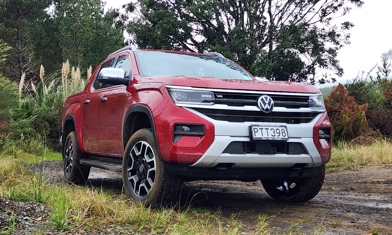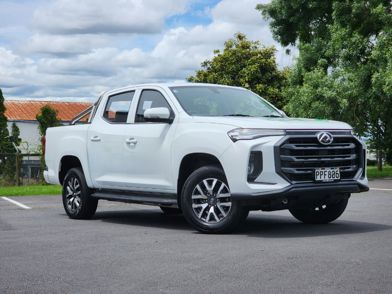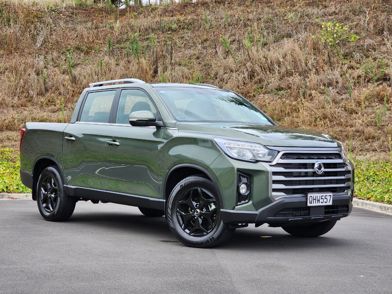Meet the new Ram 1500 Big Horn Crew Cab. It’s 6142mm tip-to-tail, meaning you can’t buy a longer right-hand-drive Ram truck in New Zealand. But it’s also the cheapest; the entry-level.
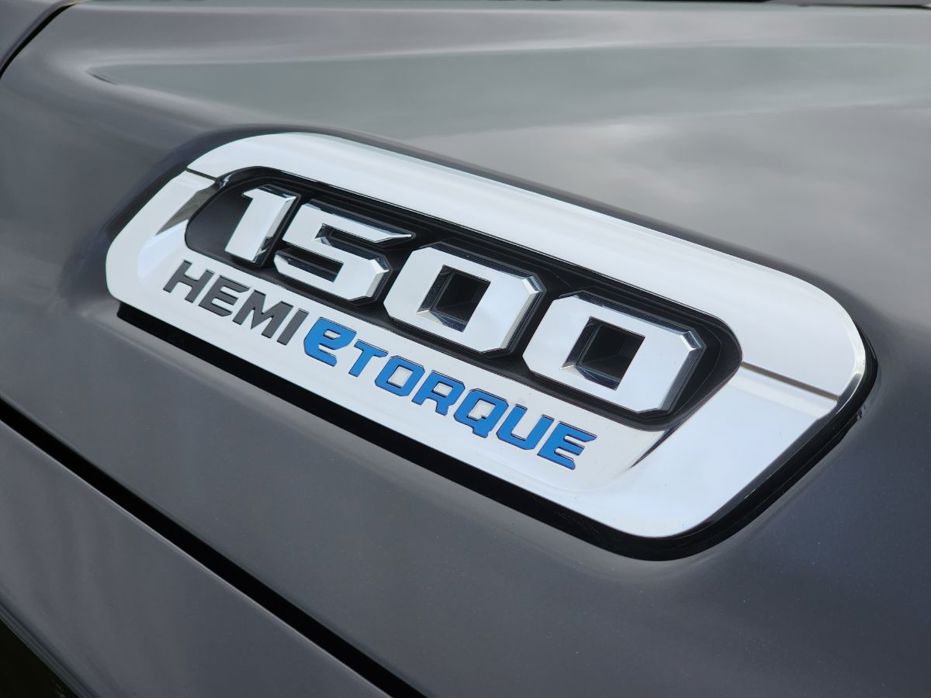
Here's how that works. The 1500 petrol V8 is the start point for Ram in NZ, sitting underneath the larger diesel 2500 and 3500 models. Bighorn is what you might call the workhorse version, a more basic machine that cuts down on the luxury to give a better-value, more practical pickup-truck package. As you might have noticed, it's still the previous-generation DS shape: the 1500 Laramie and above models are the new DT series.
At $129,990 (or $119,990 at the current special price, until July 14), it's still a handy $20k cheaper than the 1500 Laramie and gives Ram a Kiwi market position that the rival Chevrolet Silverado can't quite match. Although the Big Horn price is still a long way from the previous entry-level Express model, which ducked in under $100k.
The Bighorn’s work focus means you can order it with the standard 1500 5’7” tray (sorry about the imperial measurements, it’s from America you know), or the full-size 6’4” as fitted to the 2500. It’s the only 1500 available with the supersized deck, which requires a wheelbase extended by 226mm to an incredible 3898mm (longer than an entire Suzuki Jimny 5dr), and offers nearly 2m load length with the tailgate closed.
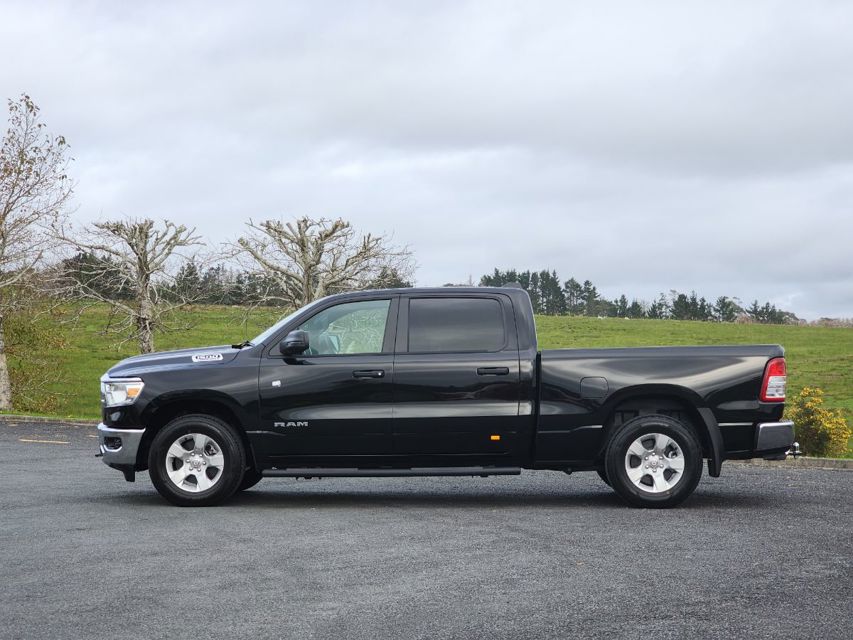
What you can’t have is the clever RamBox cargo system; it’s only for the shorter tray and it’s not offered even for the smaller Big Horn in NZ.
The 1500 Big Horn’s work focus means you can order it with the the full-size 6’4” tray, as fitted to the 2500.
Payload on the big deck is still a little short of the Ranger/Hilux one-tonne crowd at 878kg (and less even than the 5’4” model’s 931kg), because Ram is primarily about towing: 4.5 tonnes braked for this model.
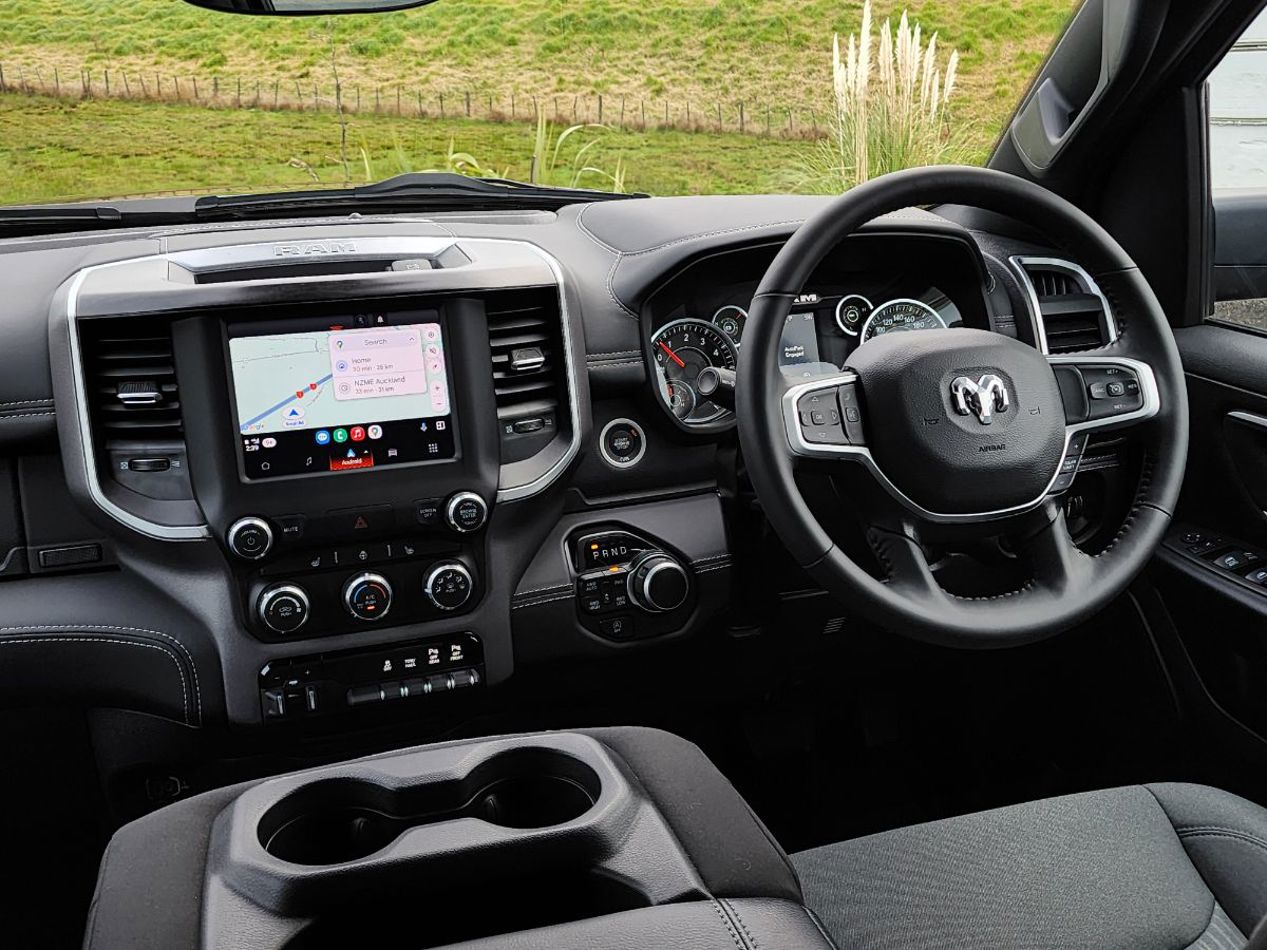
And yes, Bighorn feels a tad basic in some respects. The infotainment screen is a modest 8.4in job, not the 12in portrait display you get in the Laramie and above. The air-con is manual and there are no camera-based driver aids (forward collision, lane-departure and the like), which also means there’s also no adaptive cruise control, just a single-speed setting. No keyless entry or rain-sensing wipers, either.
Big Horn has sturdy Diesel Grey fabric upholstery rather than the leather of the Laramie, but you could argue it’s preferable.
But bearing in mind the workhorse vibe, there are also a few surprise-and-delight features. The infotainment is wireless and the 6-speaker audio remains pretty grunty (it’s an American truck after all), there’s heating not only for the front seats but also the steering wheel, and the heavy tailgate is nicely damped. Love the courtesy lighting in the tray, too.
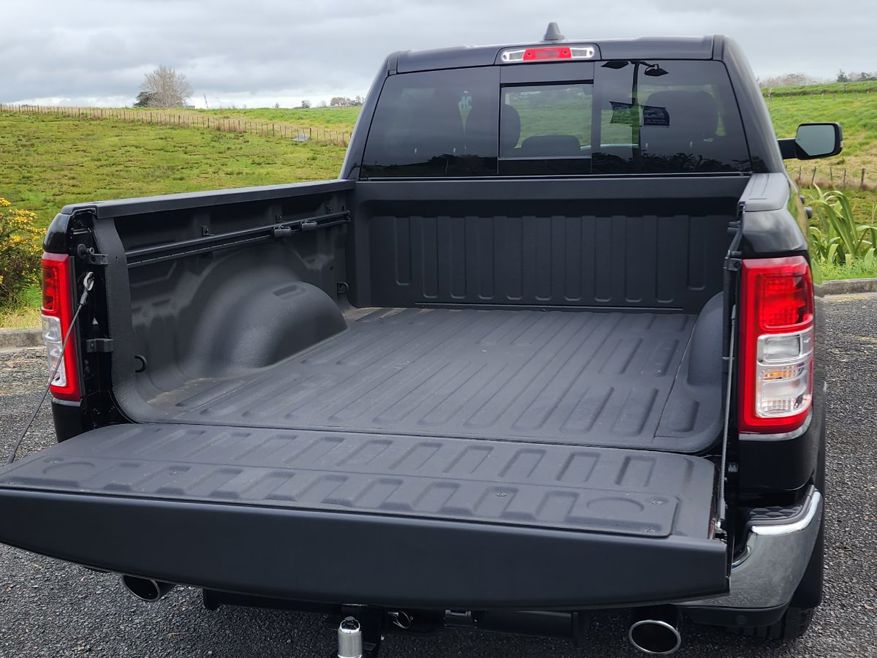
We’d also put one of the outwardly basic aspects of Big Horn into the “delight” column. It has sturdy Diesel Grey (what a weirdly unappealing name) fabric upholstery rather than the leather of the Laramie, but you could argue it’s preferable: nice to look at and really quite comfortable.
This is a massive thing to park, unless you have side-by-side spaces where you can reverse in and hang the tail over a median strip.
You might note that this is a technically a six-seat cabin; but the Ram is only certified as a five-seater for Australasia, so the centre-middle chair is locked down permanently. It's still very obviously a seat, though; the release for the backrest has been removed and replaced with a neat little phone holder.
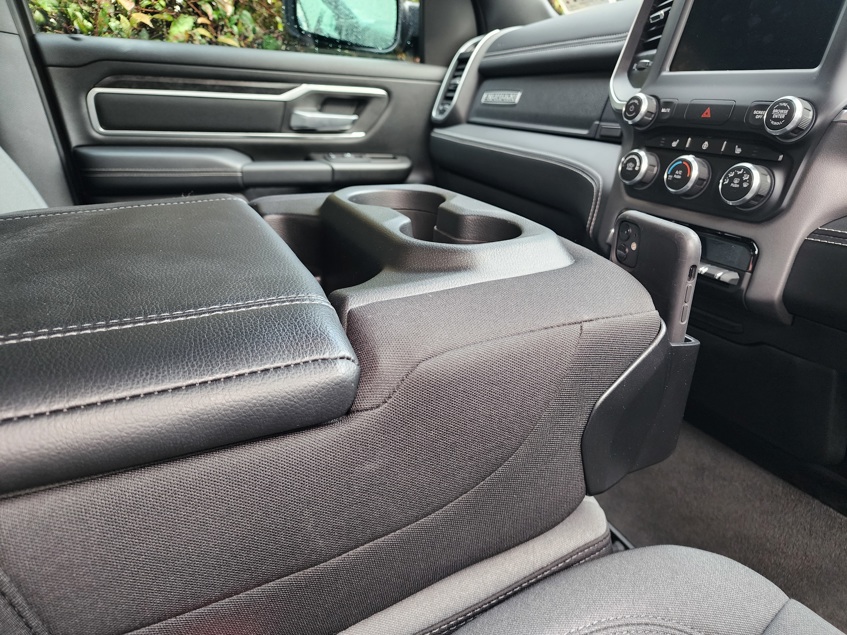
Potentially a bit confusing then, especially for the visitor to the Ram stand at June’s Fieldays event who wrenched the centre-seat of this very vehicle up to investigate. Oops.
The rear chairs offer limo-like legroom and more, and the Bighorn retains the Ram “stadium” rear seat design, so-called because the squab and backrest can fold together vertically to liberate a load of extra interior storage space.
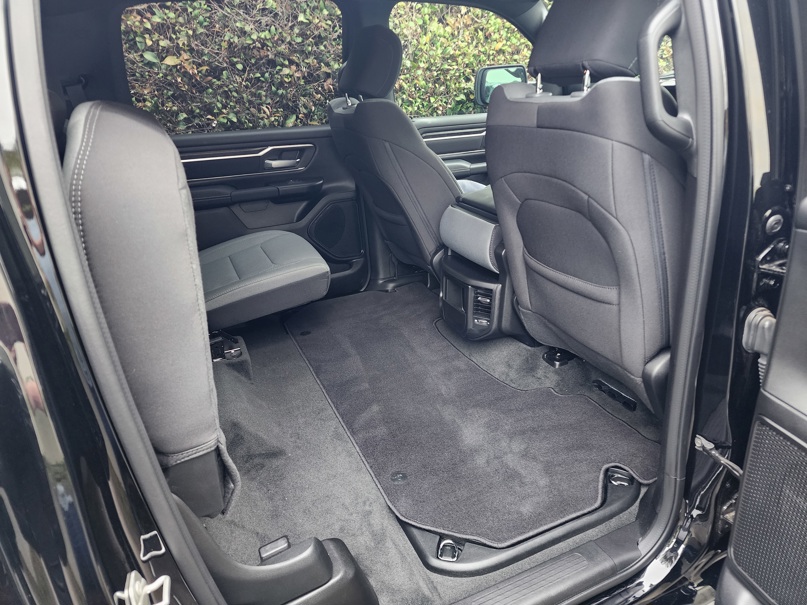
Mechanically, this is standard 1500: 291kW/556Nm 5.7-litre V8 petrol with 48-volt mild hybrid system (eTorque in Ram-speak), 8-speed transmission and all the fancy 4x4 modes, including a full auto setting.
It’s surprisingly wieldy on-road, the big V8 humming along with a discernable but far from intrusive rumble. It steers and handles with remarkable accuracy given the size and weight, as long as you can deal with the 15.2m turning circle.
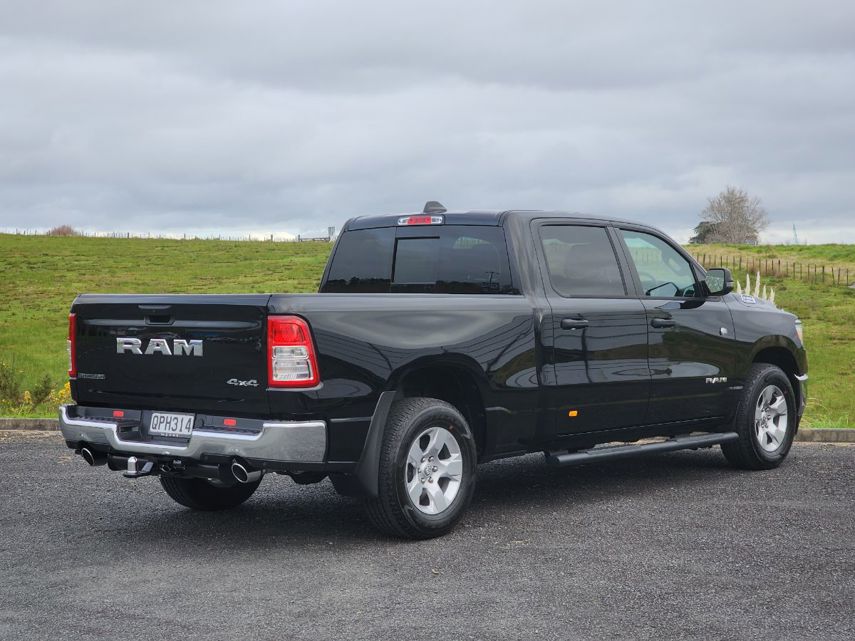
If the 13.6l/100km 3P-WLTP fuel economy rating sounds a little optimistic - well, we were in the 12s for 100km/h motorway running (cylinder deactivation helps), although it climbs rapidly if you’re hammering it around town. The bigger-tray model also gets a bigger fuel tank, up from 87 to 98l.
We do miss the parking assistance and 360deg camera of the Laramie. This is a massive thing to park in urban areas, unless you’re in a place with side-by-side spaces where you can reverse in and hang that massive tail over a median strip. The rear-only reverse camera is nice and clear, though.
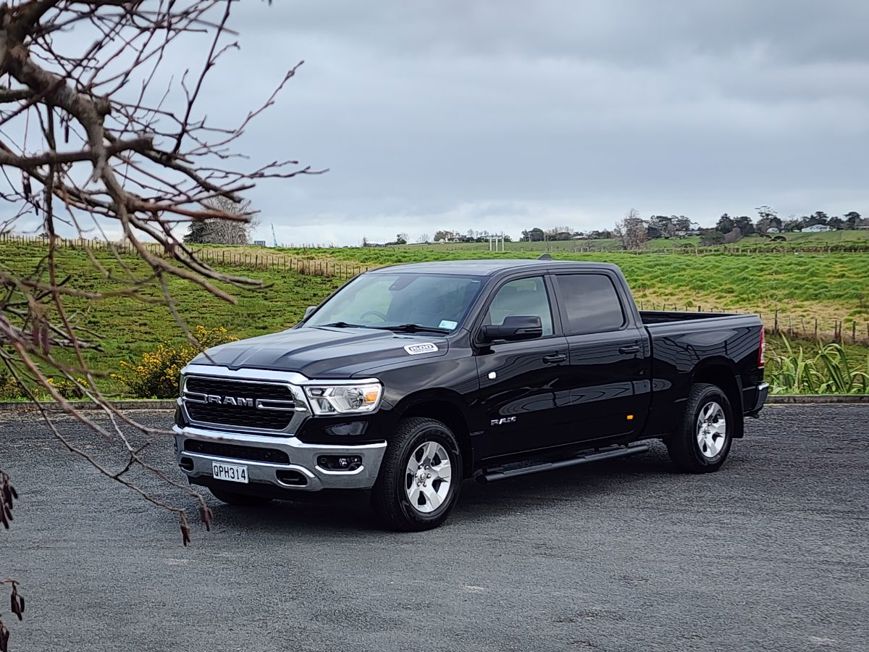
A more basic Ram is actually very appealing; a great reminder that these are honest, functional working trucks in the US. But you’d have to really need that larger tray to have it on the 1500; it makes this super-ute really big, just like it says on the box.
But the biggest issue is what it's really called: "Bighorn" or "Big Horn"? The badging on the vehicle says the former, all of Ram's literature (website, brochures) says the latter.
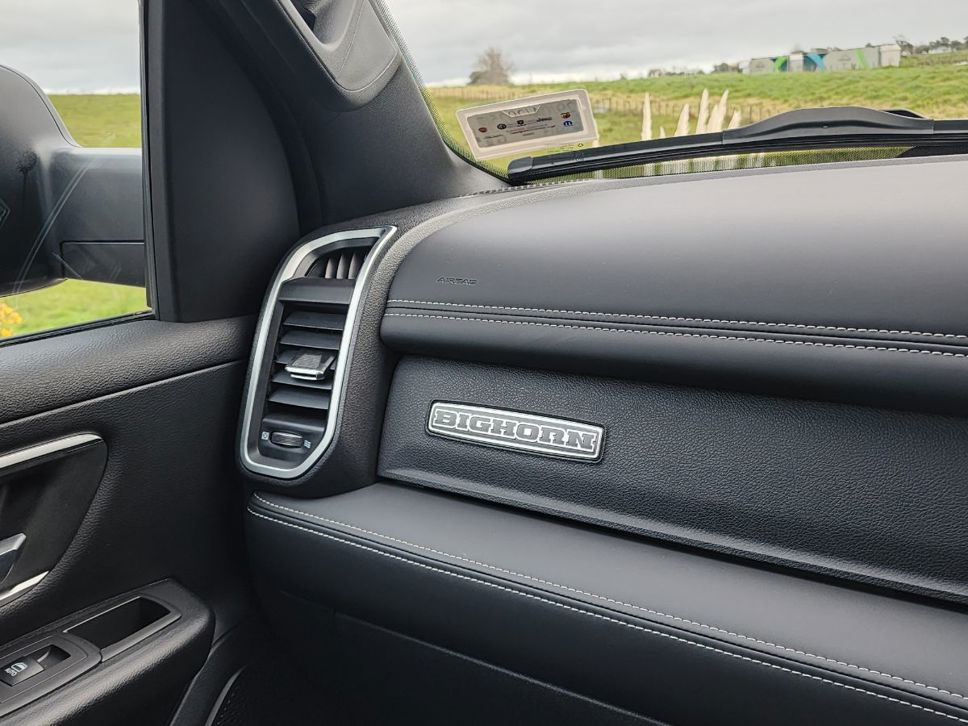
It partly depends what it's named after. The Bighorn mountains in Wyoming are spelled as one word according to the US Forest Service, as is the bighorn sheep. But the town and geography are officially Big Horn. The definitive answer is... we don't know.
ENGINE: 5.7-litre petrol V8 with cylinder deactivation and 48-volt mild hybrid system POWER: 291kW/556 Nm GEARBOX: 8-speed automatic, part-time 4WD with automatic mode CONSUMPTION: 13.6l/100km (3P-WLTP) PRICE: $129,990 ($119,990 until July 14).
What are the key statistics for the Ram 1500 Big Horn?
The big V8 packs plenty of punch (and it needs to for this 2.5-tonne truck): 291kW/556Nm. It's matched to an 8-speed automatic and the Big Horn gets the full part-time 4WD system, which allows it to run in RWD, full-auto AWD or proper 4WD for off-tarmac driving.
Is the Ram 1500 Bighorn efficient?
Actually, yes - in relative terms. The big V8 also has a mild-hybrid system and four of the eight cylinders can shut down when cruising, so you can actually do better than the official 13.6l/100km in motorway running. But it does like a drink around town.
Is the Ram 1500 Big Horn good to drive?
Again, the opposite to what you might expect: it's quite pleasant given the sheer size and weight, with good steering and predictable handling. No fancy adaptive suspension for this model, but small(ish) 18-inch wheels also ensure a pretty good ride.
Is the Ram 1500 Bighorn practical?
If you're buying a truck like this you want tray space and (most importantly) significant towing ability. The Big Horn is the only Ram 1500 that can be fitted with the big 6'4" tray from the 2500/3500 models and it can haul 4.5 tonnes.
Worth noting, though, that the tray payload of 878kg is down on the model with the smaller deck; it's all about balancing overall weight with that tow rating.
What do we like about the Ram 1500 Big Horn?
It's smooth, powerful, very easy to drive - and not as ridiculously thirsty as you might imagine. The plain grey fabric trim of the Big Horn is quite appealing and despite the basic equipment level, there are some nice touches in the cab and around the tray.
What don’t we like about the Ram 1500 Bighorn?
It's shorn of camera-based driver assists like adaptive cruise and lane-keeping, and there aren't many $100k-plus vehicles we can think of that have manual wipers and air-con.
Speaking of price: the Big Horn is $20k cheaper than the Laramie, but it's still a big step from the previous-generation Express, which was (just) under that six-figure mark.
What kind of person would the Ram 1500 Big Horn suit?
It's nowhere near as showy as the rest of the Ram range, so it'll be somebody who genuinely wants that tray space and/or 4.5-tonne ability at the best possible price. They might like petrol V8s, too.



